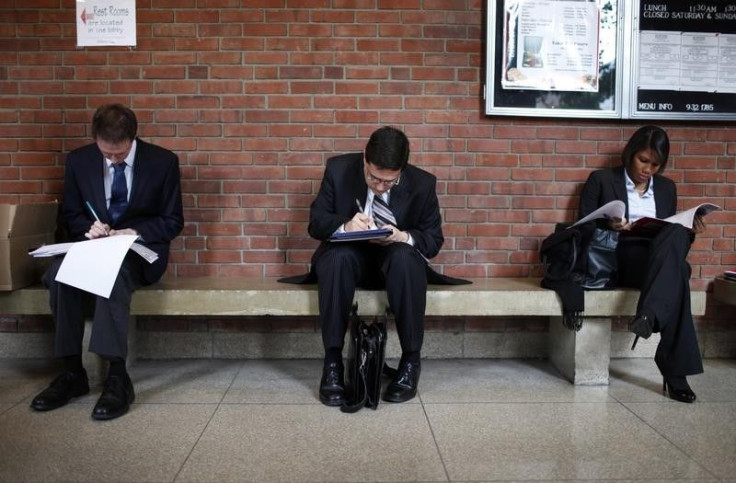US Economy Adds 271,000 Jobs In October, Unemployment Drops To 5%

U.S. employers added a greater-than-expected 271,000 jobs in October, the best monthly showing of 2015. The unemployment rate fell to 5 percent, matching its lowest level since March 2008, the Labor Department said Friday. October’s gain follows two consecutive months of tepid employment growth and multiple months of hiring growth slowdown.
The solid October gain will help the U.S. Federal Reserve build a case for raising interest rates at its next meeting in December for the first time in nine years. Such a rate hike would raise the cost of borrowing for everything from business activity to credit cards.
“The U.S. economy seems to be heading in the right direction,” Mark Hamrick, senior economist at Bankrate.com, said. “But we’ve been stuck in this modest or moderate mode of jobs growth for months. When we were in the final months of 2014 we were seeing a strong surge. We’re not going to see the same thing this year.”
The U.S. economy was forecast to add 180,000 nonfarm jobs last month, and the unemployment rate was expected to stand at 5.1 percent, according to analysts polled by Thomson Reuters. The U.S. economy added 3.1 million jobs last year, but with just two months left to go, the 2015 number is barely over 2 million. Neverthess, October's number increases the liklihood of a December U.S. rate liftoff.
“The much-bigger-than-expected 271,000 surge in nonfarm payrolls in October confirms that the weakness in August and September was just a temporary blip, and given the circumstances, a December interest rate hike would now appear to be the most likely outcome,” Paul Ashworth, chief U.S. economist at Capital Economics, said in a research note.
The average hourly earnings for private-sector workers rose by 9 cents to $25.20. For most workers, however, real wages have not kept pace with inflation for decades.
“Nominal wage growth has been hovering around 2 percent for the entire period of recovery since 2009,” said Irene Tung, a senior policy researcher at the National Employment Law Project. “Before that it was 3 percent, but the target should be around 3 1/2 to 4 percent.”
The labor force participation rate -- a measure of the number of people who are employed or are seeking employment -- was unchanged at 62.4 percent last month, its lowest since October 1977.
Employment in professional and business services rose by 77,000 in October, above the average monthly gain of 52,000 over the past 12 months. Jobs in the healthcare sector increased by 45,000, meanwhile, while retailers added 44,000 jobs.
Construction employment increased by 31,000 in October, up from flat the previous month, while mining continued to trend downward, losing 5,000 jobs. Manufacturing jobs remained unchanged.
"Underneath the euphoria over a good top-line employment number is this fact: Manufacturing hasn't gained a single net job since January,” Scott Paul, president of the Alliance for American Manufacturing, said in a statement Friday morning. “The effects of China's industrial overcapacity can be seen in waves of layoffs in American steel, aluminum and other manufacturing sectors.”
© Copyright IBTimes 2025. All rights reserved.





















